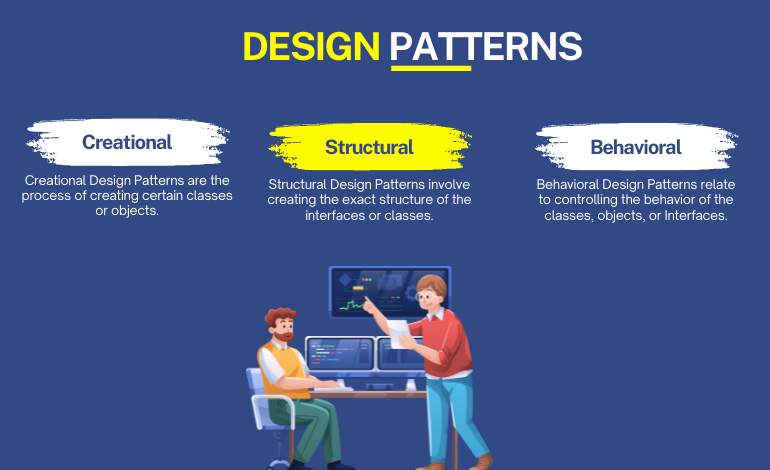If you’ve ever worked with enterprise-level software or any older software, you are aware that there is a certain pattern of programming (Design Pattern) to solve an issue. If you’re beginning your career as a software developer, it is likely that in the near future, or at any time in your career, you will be working using at-least one Software Design Pattern.
Because of the importance of the role of Design Pattern in software development In light of the importance of Design Patterns in software development, I was keen to share my knowledge on Design Patterns with as many people as possible. In this article, we will look at the different types of Design Patterns and how a Design Pattern can be studied in addition.
What is a Design Pattern?
If you’ve never heard of Design Patterns, then it is likely that you will find it slightly intimidating but it’s just an approach to understanding basics. So, to get to the core of the matter, four software engineers sat down and observed common approaches that were used to resolve common problems, and recorded them in an extremely efficient way, and they identified them as Designs Patterns.
There’s a second question: how did the four software engineers do? therefore, let’s tackle this issue also.
- Erich Gamma
- John Vlissides
- Ralph Johnson
- Richard Helm The above persons are referred to as The Group of Four who are responsible for the creation of the book titled Designs Patterns: Elements for Reusable Object-Oriented software.

Purpose of Design Patterns
Design Patterns play a very significant role in Object Oriented Software Design. Each level of enterprise application is a Design Pattern implementation. Design Patterns assist in creating more reusable code. Friendly Code that is easy to manage.
Why Design Patterns are Required?
- Utilizing the use of a Design Pattern specific to any issue can help improve the overall design and documentation of the project.
- Utilizing the Design Pattern can help to create software that is efficient and user-friendly improved by many folds.
Components of Design Pattern
- Name: Name is the name given to the Design Pattern including the problem and its solution.
- Problem: What problem does this particular design pattern can solve?
- Solution How can I solve the problem? for a particular issue.
- Consequences: What are the consequences in terms of space and time complexity, etc?
Main Classes of Design Patterns
There are several types of Designs Patterns:
- Creational
- Structural
- Behavioral
Introduction to the Classes
We know the kinds of classes available within the Design Pattern so let’s have an introduction to classes.
Creational
Creational Design Patterns are the process of creating certain classes or objects.
Structural
Structural Design Patterns involve creating the exact structure of the interfaces or classes.
Behavioral
Behavioral Design Patterns relate to controlling the behavior of the classes, objects, or Interfaces.
Learning the Design Patterns
Understanding Design Patterns is not simply writing code, but it also involves the knowledge of Class Diagrams and the relationship between each interface or class to one another.
Design Patterns are taught in this publication The Design Pattern Elements of Reusable Open-Source Software extremely effectively.
I’ve developed an open-source project which contains all the details of every Design Pattern alongside the Java code implementation. This repository isn’t yet fully developed but will be finished in the near future. If you’d like to contribute, you are able to implement the Design Pattern in other programming languages, too.




Leave a Reply